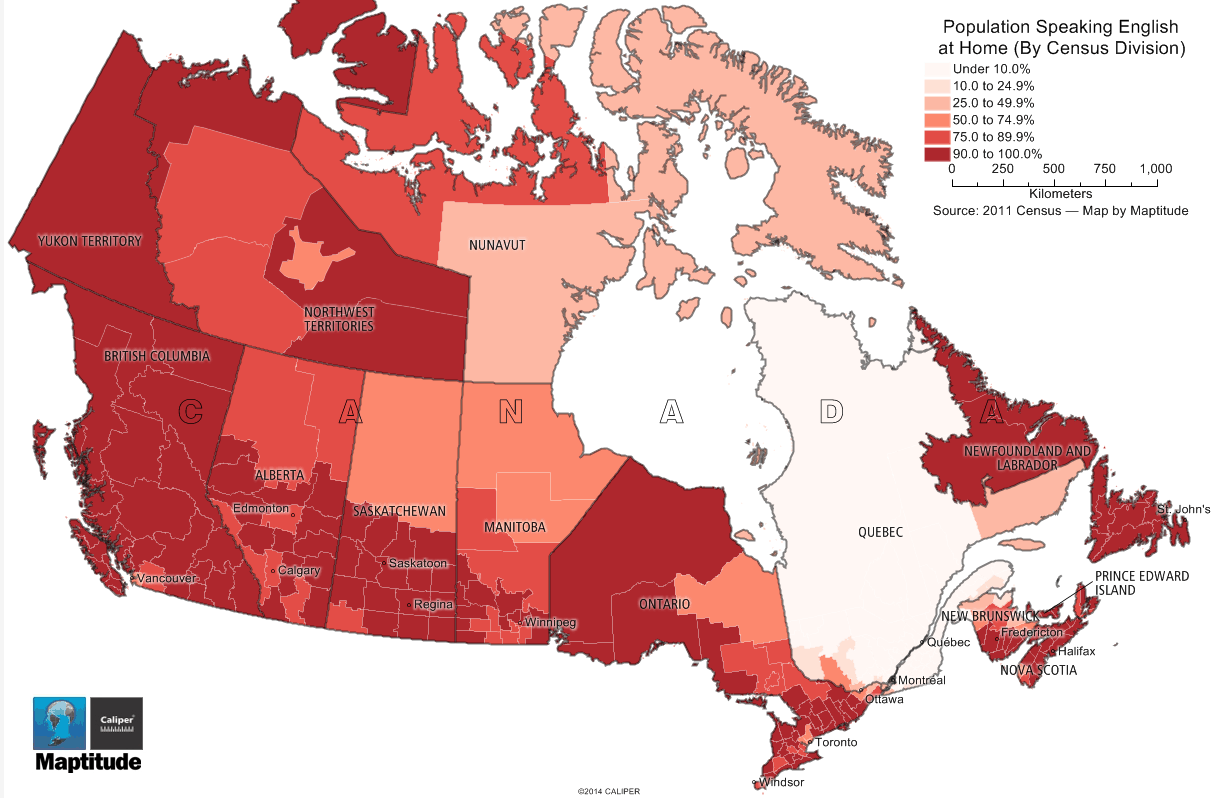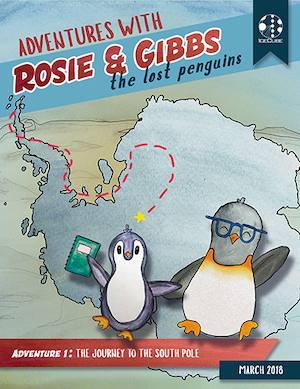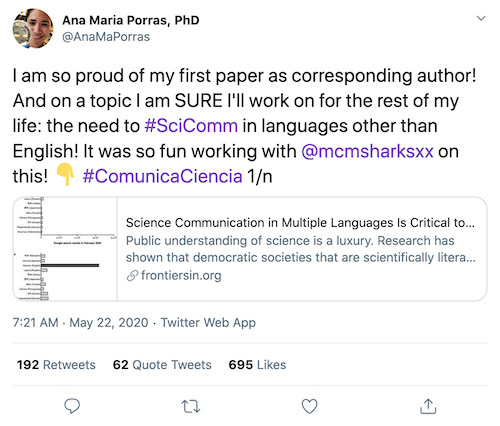Alice Fleerackers, Science in Society editor
English is the language of science, and, too often, science communication. We publish our results in English, host our conferences in English, and promote, share, and tweet about our research in English.
This reliance on a single language cuts out wide swaths of the population, including critical demographics who could benefit from scientific research findings. The consequences of the dominance of English – and non-inclusive science communication – have only become more obvious during the COVID-19 pandemic because some segments of the population (particularly the historically marginalized) are suffering more than others.
So what does it take to create effective, multilingual science communication? Here are some tips and best practices drawn from a recent editorial by Melissa Marquez and Ana Maria Porras and the lived experiences of science communicators at Lifeology’s SciArt Reading Club.
 Distribution of English, French, and other language speakers in Canada. Data: Canada Census, Map: Maptitude / Calliper.com.
Distribution of English, French, and other language speakers in Canada. Data: Canada Census, Map: Maptitude / Calliper.com.
1. Build translation into your budget
High quality translation can be costly. Make sure you budget for the extra expense before starting your campaign.

The Adventures with Rosie & Gibbs comic strips relied entirely on volunteer translators from the IceCube Collaboration. Image courtesy of IceCube Collaboration
Luckily, science communication activities are considered eligible expenses for many of Canada’s Tri-Agency research grants. In fact, funders like the Social Science and Humanities Research Council evaluate grant applications based on the strength of their knowledge mobilization plans – that is, their strategy for communicating the results of the research. But there are other options too. Institutions like the Michael Smith Foundation and the University of Alberta offer funding specifically dedicated to knowledge translation, mobilization, and communication. Science Borealis’s Farah Qaiser lists some other funding opportunities in her Medium post A Beginner’s Guide to Science Communication Opportunities in Canada.
That said, if you can’t get the funding you need, there are other approaches you can try. Take The Rosie & Gibbs comic strip, for example. It’s been translated into eight languages to date – all without the help of a professional translator. Created by the IceCube Collaboration with the goal of introducing Antarctic science and astrophysics to kids, the series relied on multilingual volunteers to make translation possible. Crowdsourcing can be powerful!
2. Use social media to share and connect
Social media can be a great way to build connections and promote messages across linguistic and geographic communities. Try out some language-appropriate hashtags, like #WissComm (German for #SciComm) or #ComunicaCiencia (Spanish for #CommunicateScience).

Ana Maria Porras used a Spanish-language hashtag to share her paper on multilingual science communication on Twitter.
Even if you don’t have the funds, skills, or time to create engaging posts in several languages, social media can still be useful. Platforms like Facebook and Instagram now come with built-in translation functions. Of course, these automated translations are never as good as the real thing, but they can provide users with the gist of what you’re sharing in their language of preference.
Just remember: not every country uses social media in the same way. Twitter may be a popular space for #SciComm in Canada and the US, but platforms like Facebook, WhatsApp, and WeChat dominate in other nations.
3. Include diverse sources
Interviewing an expert for a science news story? Incorporating stakeholder opinions in your health outreach campaign? Seek out sources who are living and working in the region and culture you’re trying to reach. They are ideally positioned to understand the needs and priorities of the audience you’re trying to engage.
Of course, finding the right source can be a challenge, especially if you are an outsider to the culture or region you’re engaging. To get started, check out The Open Notebook’s article Finding Diverse Sources for Science Stories. The jam-packed list includes free databases like The Society for the Advancement of Chicanos and Native Americans in Science’s Biography Project (first-person stories centring on Chicano/Hispanic and Native American scientists), Diverse Sources (science experts from underrepresented communities), Editors of Color’s Database of Diverse Databases (science experts across a range of fields), and more. The article also provides links to Twitter accounts and hashtags that can help you in your search, as well as tips for working with sources without overburdening them.
4. See your translator as a partner, not a service
Finally, remember that the most effective translation goes beyond the words on the page (or screen). Great translators also know how to shape messages so that they’re appropriate to the cultural context.
Jokes, pop culture references, and social norms are not always translatable word for word. Tim Lomas’s Positive Lexicography Project, an ever-expanding collection of “untranslatable” words, does a great job of illustrating this fact.
In this spirit, an evocative seafaring #WordOfTheDay (which can also reflect a more general wanderlust conditioned by a life of travel) pic.twitter.com/V03Kal2T78
– Tim Lomas (@drtimlomas) August 20, 2020
To avoid culturally inappropriate content, work with a translator who has close ties to the community you’re trying to reach. See them as a cultural guide, involve them in all aspects of the project, and trust them when they say something isn’t working. Chances are, it isn’t!
~
A last word of advice: effective science communication – in any language – is an ongoing process that puts the audience first. While this list of tips can help you get started with multilingual science communication, it is by no means exhaustive. What works well for one project (or community) may not work for another. To continue your learning, stay curious, build connections, start conversations, and stay open to possibilities. You never know where – or in what language – your next project will take you.
~
Banner image: Mastering multilingual science communication is essential in today’s global information landscape. Photo: pxhere.com




